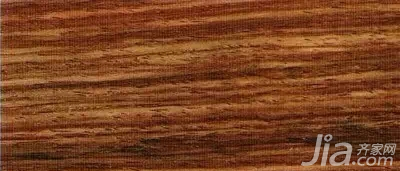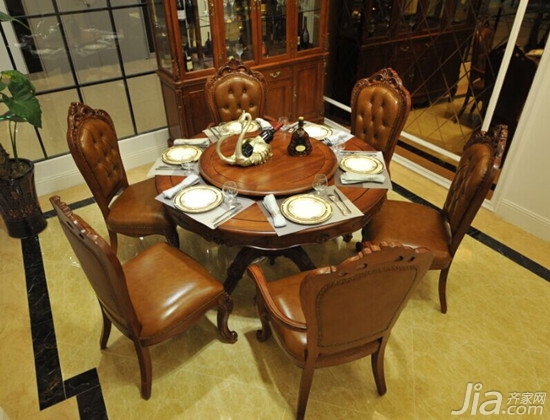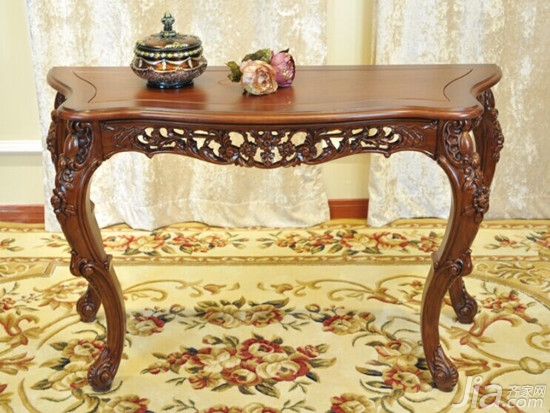When it comes to furniture, everyone knows that mahogany is good. This is well known to women and children, but compared with other wood, what is the best thing about mahogany? Why is it so expensive, but there are still so many people rushing? Where is its value or its selling point?
Good color
The Chinese have always admired the three colors of yellow, purple, and red, thinking that yellow represents honor and power, purple represents nobility and elegance, and red represents joy and wealth. These three colors are the true colors of mahogany.

Dalbergia coccinea (Rosewood)

Hedgehog Rosewood
Good texture
The beautiful texture of mahogany is difficult for other woods to match. Especially like Huanghua pear, it may be hidden or present, vivid and changeable, and full of charm.

Dalbergia odorifera (Hainan Huanghuali)
Good scent
Many of the redwoods have a fragrance. For example, the rosin and spicy aroma of rosewood, the "falling fragrance" of Hainan Huanghua pear, and the sour aroma of Vietnam Huanghua pear are very popular.

High fat
The mahogany material has the characteristics of high grease and looks very shiny. Generally, it feels smooth and oily to the touch, and this high-fat property is also conducive to the long-term preservation of furniture.
Good flexibility
In mahogany, the flexibility of red sandalwood is representative, the texture is very delicate, no matter horizontal and vertical carvings are unobstructed, so there are many fine sandalwood carved furniture.

High stability
Stability determines the shelf life of furniture, and at this point, mahogany furniture has the advantage. For example, we often see the Huanghua pear, red sandalwood, and red rosewood furniture handed down in the Ming and Qing dynasties, which have not been deformed for hundreds of years, and some inferior wood often has been bought for two or three months, and various problems have occurred. This is the advantage of Redwood.
High degree of detail
Most of the mahogany wood is delicate, especially the small and few brown eyes of rosewood and red sandalwood. It is very comfortable to touch by hand.

Profound culture
During the Ming and Qing dynasties, mahogany furniture prevailed. During such a long period of time, the production of mahogany furniture has accumulated a lot of experience, and at the same time, it has produced a profound cultural accumulation, which represents a taste. This is something that other woods do not have.
Five values ​​of mahogany furniture
1. Material value
As far as the current situation is concerned, the most problematic material for consumers is the material problem. Because the price of different materials is very different, it directly affects the value of furniture. Due to the lack of understanding of various types of high-end wood by most consumers, furniture manufacturers and sellers are also mostly ambiguous. Individual profit-seeking people use people to appreciate the psychology of high-end wood, and then fill it second. ; Where yellow wood is often called Huali or Huanghuali. This behavior disrupts the normal value order and greatly damages the interests of consumers.
There are about fifteen species of Pterocarpus, while there is only one type of Pterocarpus in traditional understanding. It is a specialty of South Andhra Pradesh, India. The scientific name is "Sandalwood Red Sandalwood". This sandalwood red sandalwood has different characteristics due to different ecological environments. Some wood colors show the shape of Venus, and some appear chicken blood red. Therefore, the names such as Venus red sandalwood and chicken blood red sandalwood are derived. In the genus Pterocarpus, except for sandalwood Pterocarpus, all the other species belong to the "Caohuali" population.
There are dozens of species of Dalbergia, and only Huanghai Pear produced in China's Hainan Island has the scientific name "Dalbergia odorifera". Southern China often calls this wood "Xiangzhi". In addition, all belong to the "Rosewood" model. "Rosewood" is commonly known as "Redwood". There are two kinds of rosewood in the mahogany national standard. The black rosewood has a black color and hard wood, which is easy to be mistaken for red sandalwood. Red rosewood has a straight texture and bright red color, which is not difficult to identify. Dalbergia austria in red rosewood is also called white rosewood because of its light color. Correctly determining the material is very important when evaluating the value of furniture.
With the shortage of materials, the prices of various types of wood are rising, and it is an important link to judge the value of furniture at any time to understand the market of materials.
2. Scientific value
The scientific value includes several aspects such as furniture design and tenon-and-mortise structure. It is most prominently reflected in Ming-style furniture. The manufacture of Ming-style furniture is mostly from a practical point of view, and its shape, scale and structure are determined according to people's daily needs. On this basis, necessary modifications are made to achieve the perfect combination of function and beautiful shape.
In terms of plastic arts, most Ming-style furniture has obvious side-foot points. Take a Ming-style four-headed armchair as an example. The face height is 50 cm. The inner distance between the upper sides of the front legs is 50 cm. The distance is 54 cm and the legs are 2 cm apart. The upper inner distance of the lateral legs is 37 cm, while the lower inner distance is 40 cm, and the legs extend 1.5 cm each. The upper side of the back side column is 47.5 cm, and the lower side is 50 cm. Other artifacts such as tables, stools, cabinets, etc. also have this phenomenon.
Why do you want to do this? This is because the ancients wanted to achieve a stable and beautiful effect. There are visual errors in the eyes of people, the smaller the distance, the higher the line of sight is 1.5 meters, the height of the table is 80 cm, and the height of the chair surface is about 50 cm. If there is no side foot to score points, the visual effect must be top-heavy. If there are side feet to collect points, not only the visual effect is beautiful, but also the furniture is quite stable.
The shape and scale of the furniture in the Ming and Qing Dynasties also reflected the proportional relationship between the furniture and the various parts of the human body. On the yawning, it looks pretty. The height of the armrest of the chair is about 23 cm. The person sits on the chair with the forearm parallel and naturally sags, just lying flat on the armrest.
The most worth mentioning is the angle of the back of the Ming Dynasty circle chair. Its back plate is made of thick plates. It is "S" shaped. It is designed according to the natural curve of the human back. The upper end of the back pillar of the chair is slightly bent backwards, and the middle of the brain is also bent backwards, so that the back forms a back angle of 100 degrees to 105 degrees. The sitting surface is versatile and has a very flexible rattan mat. People sit on it. The rattan mat sags under pressure and forms a sitting angle of 3 to 5 degrees with the front edge of the seating surface. angle. This shows that our ancestors in the Ming Dynasty 500 years ago have organically combined the shape of furniture with the relationship between the various parts of the human body. Its scientific nature still has extremely important research and reference value for future generations and even in the future.
The furniture of Ming and Qing dynasties is strong and durable. In addition to the selection of high-quality wood, another important reason is its scientific and reasonable tenon riveting structure. Using the characteristics of high strength of hardwood, the precise and complex tenon riveting is made with a smaller cross section. A piece of furniture must be composed of several components. The components are cleverly combined with each other through tenon riveting of various forms. Form a whole piece of furniture. Some parts can receive six to seven members from different directions.
A good piece of classical furniture, whether it is plastic art or structural mechanics, has reached the level of perfection, and has important scientific value. It not only shows the ingenuity and diligence of working people, but also leaves a precious spiritual wealth for future generations.
3. Historical value
Furniture art is a new discipline that emerged in the 1980s under the highly developed historical and cultural arts. It is the product of the highly developed Chinese history, culture and art. No matter what kind of artifact, it is an irreplaceable physical witness to the historical development of the Chinese people. Historical relics not only reflect the role of historical development and historical witness, but also play a role in supplementing and correcting errors and errors in historical documents. In this respect, historical relics show its outstanding value and status. Each historical relic is a comprehensive carrier of multiple historical information.
The historical value requires accurate chronology, and the artifact itself must have a solid chronological basis, such as: model identification, model identification has a year number, indicating the dynasty, year, and month of the device; there are purchase and commemorative models, that is, what year Where did He Yue buy this device from, or a commemorative money that someone made or made in a certain place and year. Some also reflect the location of furniture production. It is very helpful to understand the characteristics of furniture in various places. Although some utensils have no knowledge, there are historical materials and other records that can confirm the production time and the spread process. It is also a thing with an accurate age. These pieces of furniture with a clear age can be used as specimens of similar utensils, which provides a strong basis for our research on the development and changes of furniture in various periods and the determination of the dates of other similar furniture. It has important reference value.
4. Cultural value
Traditional furniture, as an integral part of social material culture, gets along with people day and night, and coexists with people. It is not only a necessity for people to use, but also a record and performance of craftsmanship. In different historical periods, the use of furniture also reflects a strong national ideology, national moral concept, and national behavior Mode etc. For thousands of years, furniture has always been in close contact with society's politics, culture and people's customs, beliefs, and lifestyles. As far as its decorative subject matter is concerned, it fully reflects the traditional Chinese cultural thoughts and aesthetic appeal.
The aesthetic concept is reflected in the furniture. Under the premise of satisfying the use function, each part of the furniture is applied with different artistic shapes, or various patterns are used to decorate the surface of the component to make the utensils both practical and practical. Ornamental. Give people a comfortable feeling in visual effects. Each picture embodies the profound cultural heritage of the Chinese nation. Every picture can tell a beautiful story. It is both a material carrier and a spiritual inner letter. It can be said to be a clever combination of material civilization and spiritual civilization. A beautiful piece of furniture must have the perfect unity of form and content, and the letter expressed by the decorative pattern is the emotional condition for people to understand the ideological and cultural. Using image beauty and cultural thoughts to evoke human emotions is a distinctive feature of cultural value.
5. Artistic value
The artistic value is simply the artistic level. The skill level of the craftsman determines the art level of the utensils. The difference in artistic level, measured by value, is called artistic value. Artistic value is created by artists, its superb pioneering spirit and unique artistic style. It not only enriches people's spiritual life and gives people the enjoyment of beauty, but also the source of inheritance of our cultural and artistic creation today.
We advocate bold innovation, which must be based on inheriting cultural traditions. The author has seen an example of a sculpture, a Maitreya Buddha, standing with his head raised, holding a gold ingot in his left hand, and a stick on his right hand. From the level of his carving, it can be regarded as medium, but the author does not understand ancient traditional cultural knowledge. He moved the gold ingot from the Taoist God of Wealth, and the crutches from Shou Xing, and made a nondescript thing by moving the flowers to the woods and striking things together. Although he has made bold innovations, such innovations have turned to the opposite side and become dross, and of course its value cannot be discussed.
Speaking of the craftsmanship of furniture making, it can be roughly divided into three types: carving, inlay and painting. This is the most commonly used artistic technique in furniture art.
The carving techniques are further subdivided into six types: flat carving, relief carving, round carving, open carving, comprehensive carving, and wool carving. Different artistic techniques should be applied according to various patterns. Mosaic decoration refers to embedding materials such as Jinshi Luodian on wood or lacquer to form various ornaments or patterns. Mosaic, also known as "Hundred Treasures", was first created by Zhou Zhu in the Ming Dynasty, also known as "Zhou" or "Zhou System". In the early Qing Dynasty, there were many people who followed suit. Although there are many furniture inlay materials, the most of them are Luodian inlays. Followed by various colors of enamel, wood carving, various colors of stone, various colors of porcelain and gold and silver. The general rule is that the higher the economic value, the fewer the quantity.
There are two types of embedded Luodian process, one thick Luodian and one thin Luodian. Houluodian is more common, and Boluodian is rarely seen in the world because of its small existence. Boludian is also known as "Colorful Luodian". The inner skin of the colored shell is peeled and embedded on the lacquerware. Its thickness is only equivalent to the newsprint used today. Very difficult to strip. The processing difficulty is much higher. Such artifacts were only popular for a while in the late Ming and early Qing Dynasties, and with the decline of the National Games, they no longer have the ability to make such crafts.
Painted decoration refers to furniture decorated with paint. Generally divided into two major categories of single color paint and color paint. Monochrome paints are mostly melanin paint, followed by red paint, purple paint, brown paint, yellow paint, etc. Adding paint is done on the basis of monochrome paint.
There are several ways to add color paint: 1. Sprinkle gold: also known as "sprinkle gold"; 2. paint gold; 3. paint paint; 4. paint oil; 5. paint; 6. scratch. Other utensils combine several crafts into one, which is called the comprehensive decoration technique.
Regardless of engraving, inlaying or painting, artists are required to have a profound artistic accomplishment. The artifacts produced must be lively, vivid, and vivid. If it is only formless and indifferent, rigid and rigid, its value cannot naturally be compared.
For more details: please go to the C-25 Ombre mahogany furniture booth at Floor B1, Furniture Building Materials Hall, No. 1228 Zhennan Road, Putuo District, Shanghai
What, the decoration still uses his own money? ! The Qi family is decorated in installments, with an ultra-low annual interest rate of 3.55% and a maximum loan of 1 million. Apply now to enjoy the discount
If you are interested in brand cooperation, content cooperation, and advertising of this website, please send an email to :.
Mahogany furniture mahogany mahogany tea table
Portable 3 Ply Disposable Masks Non-woven Face Mask With Elastic Earloops
Disposable Surgical Face Mask
Dongguan Anmeixuan Electronic Technology Co., Ltd , https://www.hyashine.com